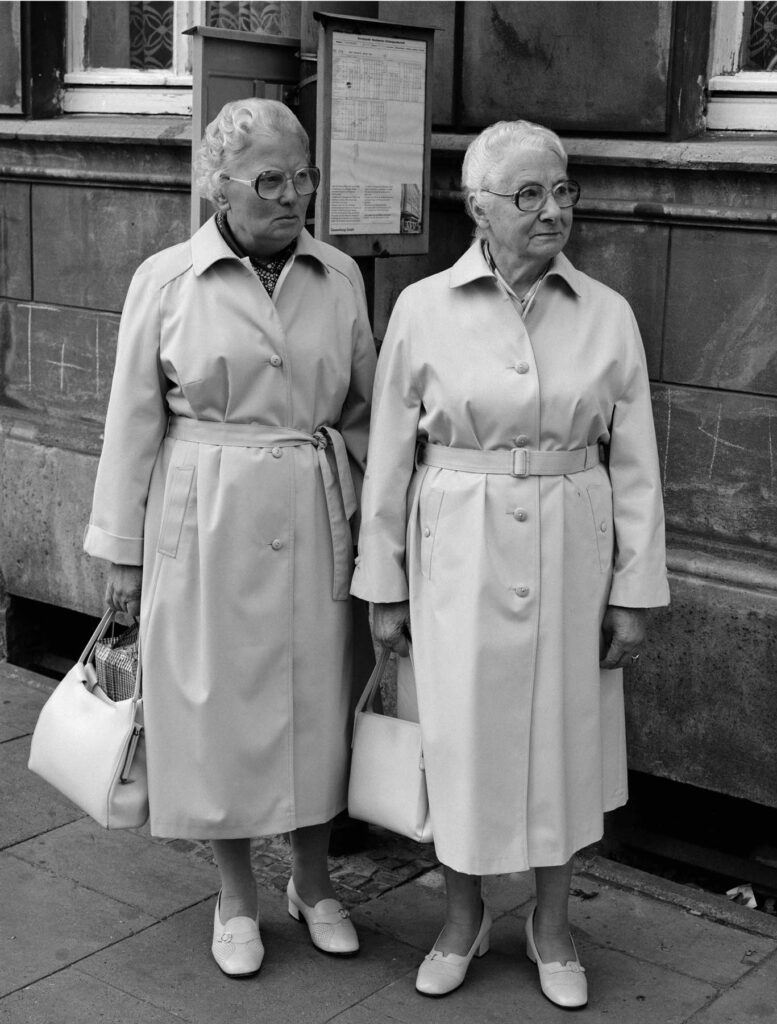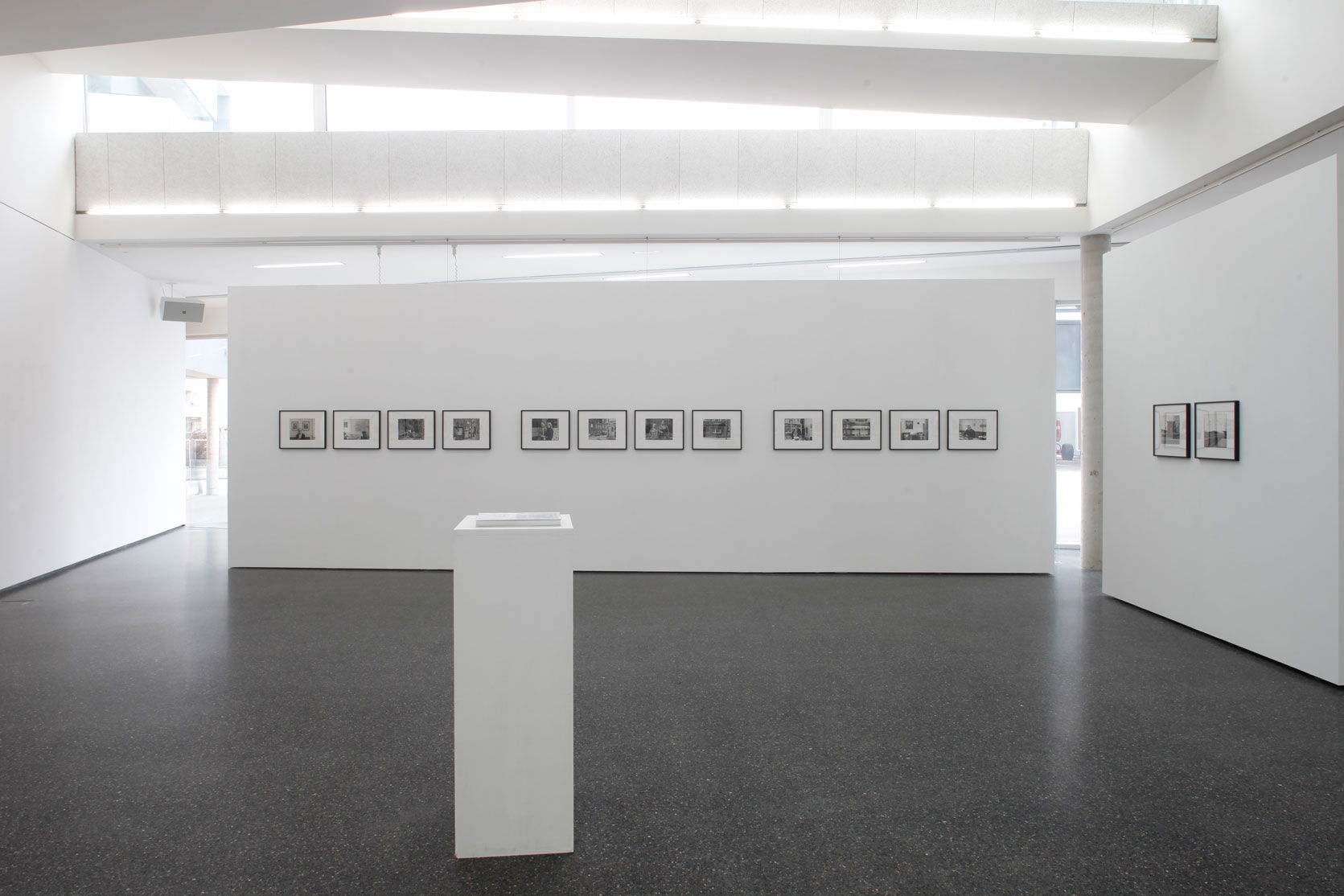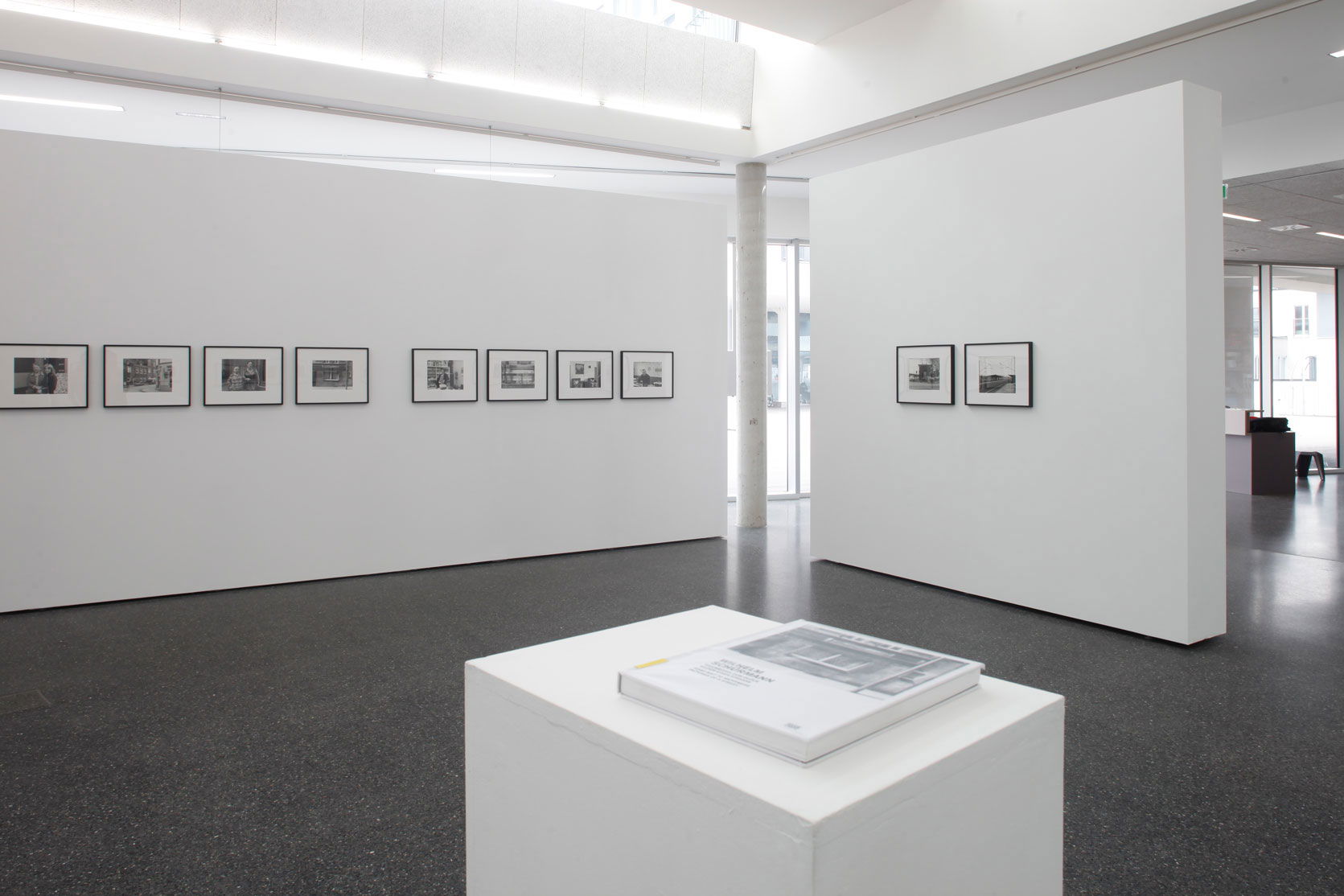Wilhelm Schürmann
Wegweiser zum Glück. Bilder einer Straße, Dortmund 1979–1981 Zu Hause – hier Herzogenrath – Berlin 2007–2013
At the heart of the exhibition by German photographer Wilhelm Schürmann is a selection of 40 black-and-white photographs from the now legendary series featuring “his” Dortmund street. It is part of the presentation entitled “Wegweiser zum Glück. Bilder einer Straße 1979-1981“ (Road Map to Happiness. Pictures of a Street 1979-1981) which was on show from March to August 2012 at Die Photographische Sammlung /SK Stiftung Kultur in Cologne. For the current exhibition in Salzburg Wilhelm Schürmann is showing two other series that offer an insight into his lifelong photographic involvement with the theme of “neighbourhoods”.
Herzogenrath and, more recently, Berlin are the artist’s places of residence; they are also the starting points for his forays into familiar territories of quotidian life in Germany. These images, now captured digitally, complement the classic wall pictures with rapidly changing images projections on the monitor, illustrating Schürmann’s method of serial work. With unwavering precision the photographer’s eye remains trained on the often humorous constellations of the urban setting.

Now recognised internationally as a collector and curator of contemporary art, the photographer Wilhelm Schürmann (*1946) spent his childhood and youth growing up on Steinhammerstrasse in Dortmund, an area of the city typical of the region. In 1966 Schürmann left home and moved to Herzogenrath near Aachen, but between 1979 and 1981 he would return many times to his old stomping grounds. With complete objectivity, but also great enthusiasm, he renewed the ties with the everyday life of his childhood and youth, a life which in the intervening years had barely changed. He produced more than 2,000 black-and-white negatives. The motifs featured different views of the street, the façades of typical apartment buildings, neighbourhoods, parades of shops from dry cleaner’s to hairdresser’s – inside and out, apartments, furniture, details of furnishings such as decorative still lifes; but also portraits of residents he encountered and, further afield, gardens, flower beds and rear courtyards, railway station premises and adjoining wastelands.
Even today Dortmund is still the largest city in the Ruhr district. It had once been a hub of the coal and steel industry before the structural changes of the late 1950s almost brought this economic sector to a standstill. It marked the start of a trend with lasting repercussions for the people who lived there, people whose community and identity had been closely connected with the mining industry. In this picture series Schürmann not only introduces us to the environment of his own early life, but he also provides remarkable images of a time when the consequences of the post-war period were felt far more acutely in Germany and the illusions of the economic miracle became overlaid by a phase of disenchantment.


Wilhelm Schürmann’s eye highlights photography’s role as a highly effective means of analysing reality, but also of tellingly relating a narrative of personal and collective views and memories. The photographer showcases real living conditions as well as an unforgotten attitude towards life with utter concentration combined with humour and self-irony. The Wegweiser zum Glück is a “road map to happiness” brochure issued by a lottery receiving office that is seen peeking out of someone’s back-pocket, and it is just one of the many wonderfully observed moments.
The exhibition at the Fotohof is also something of a tribute to a photographer who has a shared history with Salzburg. Indeed, back in the late 1970s, Schürmann enjoyed close ties with Salzburg through his workshops and exhibitions at the Salzburg College and his lectures at the Summer Academy in early 1980.
Now, after 30 years, with this representative exhibition of works, the artist continues much in the same vein, a driving force behind the movement of auteur photography, which also began in Salzburg at the time.
In co-operation with Die Photographische Sammlung / SK Stiftung Kultur, Köln
Published concurrently by Hatje Cantz Verlag is the comprehensive catalogue entitled “Wilhelm Schürmann. Wegweiser zum Glück. Bilder einer Straße 1979–1981“, with an essay by Gabriele Conrath-Scholl, which has just been awarded the Silver German Photography Prize 2013.



